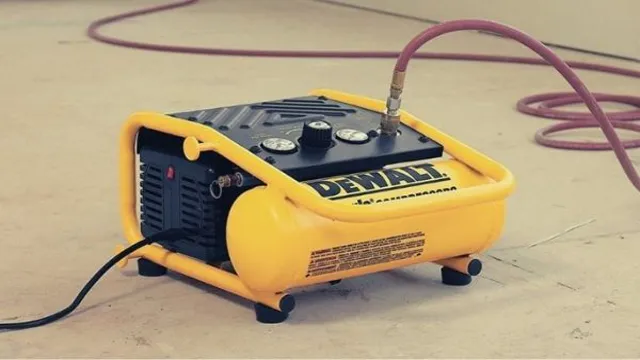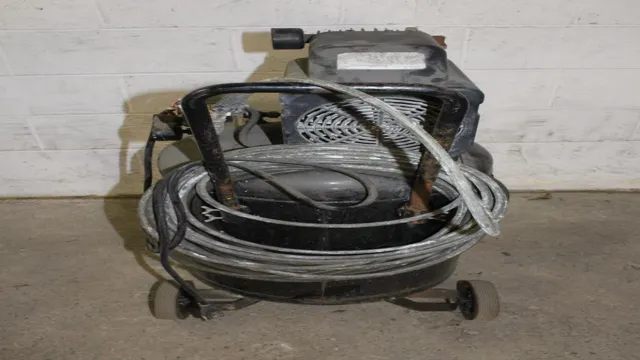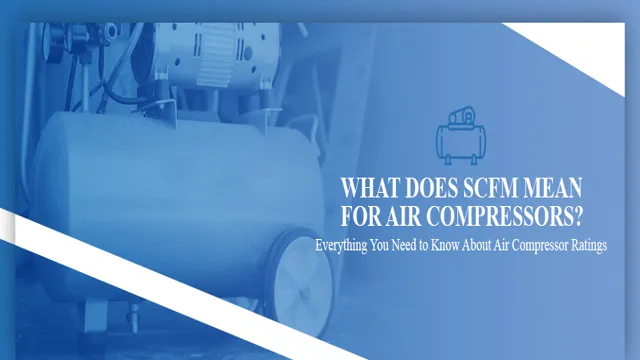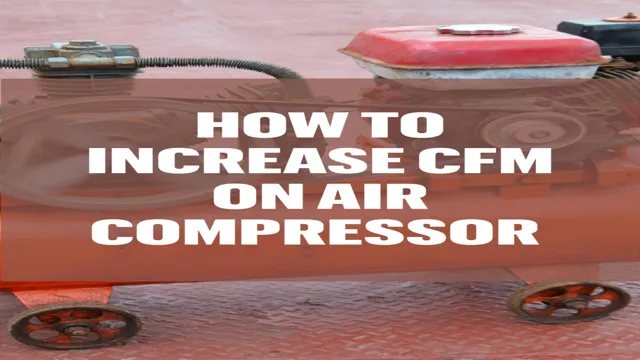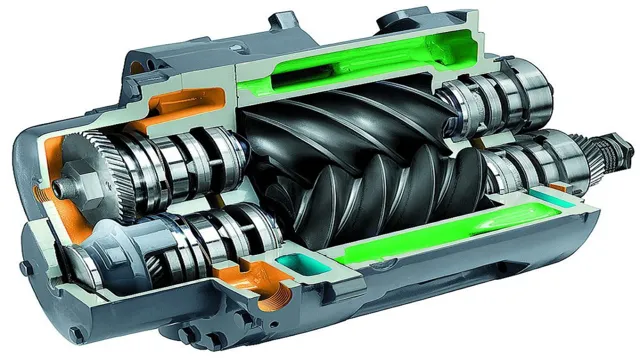How to Install Onboard Air Compressor in Your Vehicle – A Step-by-Step Guide

Ready to take your off-road adventures to the next level? Installing an onboard air compressor is a game changer for any off-road enthusiast. Not only will it allow you to adjust your tire pressure on the fly, but it can also power air tools and inflate air mattresses or rafts. But the thought of installing one can be intimidating.
Where do you start? What components do you need? How much will it cost? Don’t worry, we’ve got you covered. In this comprehensive guide, we’ll walk you through the installation process step-by-step and answer all your questions along the way. So buckle up and get ready to upgrade your off-roading game with an onboard air compressor!
Introduction
If you’re looking to beef up your vehicle’s capabilities on the road or off it, installing an onboard air compressor is a great place to start. Not only does it give you the ability to inflate tires, but it can also power air tools, run air horns, and even help with air suspension. Here’s how you can install an onboard air compressor:
Choose your compressor: The first step is to pick a compressor that suits your needs. You’ll want to consider things like the compressor’s maximum pressure and flow rate, as well as its noise level and how much space you have to mount it.
Install the compressor: Once you have your compressor, you can start installing it by mounting it securely in your engine bay or somewhere else on your vehicle. Be sure to use proper brackets and bolts to ensure it stays in place.
Wire it up: You’ll need to connect the compressor to your vehicle’s electrical system, usually by running wires through the firewall and using a relay to control power to the compressor. Add air lines: Finally, you’ll need to run air lines from the compressor to your desired outlets, such as tire inflators or air tools.
You can use either metal or plastic lines depending on your needs. By following these steps, you can add a powerful and versatile tool to your vehicle that will serve you well on all your adventures. Just be sure to consult your owner’s manual and any other relevant resources to ensure you’re installing your compressor safely and correctly.
Benefits of Installing an Onboard Air Compressor
If you’re an off-roading enthusiast or regularly drive on rough terrain, then investing in an onboard air compressor can prove to be an incredibly beneficial addition to your vehicle. An onboard air compressor can make your life on the road much easier, as it allows you to inflate or deflate your vehicle’s tires as per the requirements of the terrain. This not only improves your vehicle’s traction but also helps to prevent potential flat tires or blowouts.
Moreover, an onboard air compressor can also operate a plethora of air-powered tools and even help in making small repairs, adding convenience to your traveling experience. In short, an onboard air compressor can be a reliable tool and investment for any driver who wishes to drive safely and efficiently on rough terrains.

Tools Required
If you’re planning on embarking upon a DIY project, it’s essential that you have the right tools in order to get the job done properly. Having the right tools can not only save you time and money but can also ensure that your final product is of a high standard. When it comes to tools required for a DIY project, the type of project you’re undertaking will determine the tools you need.
For example, if you’re planning on building a bookshelf, you’ll require a saw, a drill, a measuring tape, a level and other specific tools, whereas if you’re laying a new floor, you’ll need a flooring nailer, knee pads and a rubber mallet. It’s always better to invest in good quality tools as they will last longer and provide better performance. Remember, having the right tools can make all the difference and can save you a lot of frustration and stress in the long run.
Step-by-Step Guide
If you’re an off-road enthusiast or frequently need to inflate tires, then an onboard air compressor can be an incredibly valuable investment. Installing one yourself may seem daunting, but it’s actually a straightforward process that can be completed in a few hours. Here’s a step-by-step guide on how to install an onboard air compressor: First, gather all the necessary tools and components, which typically include hoses, a compressor, fittings, a pressure switch, and a tank.
Next, position the compressor and tank in a secure location, such as under the hood or in a protected area under your vehicle. Mount the compressor and tank according to your manufacturer’s instructions. Connect the hoses and fittings to the compressor and tank.
Ensure that all fittings are tightened securely and that there are no air leaks. Install a pressure switch between the compressor and tank to automatically shut off the compressor once it reaches the desired pressure level. Finally, connect the compressor to the vehicle’s battery using a relay and wires with appropriate gauges for the current draw.
It’s also vital to wire a switch to activate the compressor from inside the car. Test the entire system, check for air leaks, and adjust the compressor’s pressure switch to suit your preferred settings. Congratulations! You now have an onboard air compressor that’s sure to come in handy on your next adventure.
Step 1: Determine the Best Location for Your Compressor
When it comes to setting up a compressor, the first step is to determine the best location for it. This is crucial, as the right location can improve efficiency and performance, while the wrong one can cause various issues, including noise, safety hazards, and even damage to the machine. So, how do you choose the right location for your compressor? There are a few factors to consider, such as the noise level, ventilation, and accessibility.
Ideally, you want to place the compressor in a well-ventilated area, away from heat sources and moisture, and preferably near the tools or machines it will serve. You should also ensure there is enough space around the compressor for maintenance and repairs. By taking the time to find the optimal location for your compressor, you can ensure it operates safely, reliably, and efficiently.
Step 2: Mounting Your Onboard Air Compressor
When it comes to mounting your onboard air compressor, there are several important steps you need to follow to ensure you get it right. First and foremost, make sure you choose a solid mounting location that can handle the weight of the compressor and won’t interfere with other components of your vehicle. Once you’ve found the right spot, you’ll need to drill holes for the mounting brackets and bolt them in place.
This is an important step because it ensures the compressor is securely attached and won’t come loose while you’re driving. You’ll also want to make sure you have all the necessary hardware, including bolts, washers, and nuts, to complete the installation. Finally, you’ll need to wire the compressor and any additional components, such as a pressure switch or air tank, according to the manufacturer’s instructions.
With a little patience and attention to detail, you can mount your onboard air compressor like a pro and enjoy all the benefits it has to offer. So, go ahead and get started today, and don’t forget to share your success with us!
Step 3: Electrical Connections
Now that you have assembled your solar panels and mounted them correctly, it’s time to connect them electrically and start harnessing the power of the sun. The first step is to connect the positive and negative terminals of the solar panels. Using a solar cable, connect the positive terminal of one solar panel to the negative terminal of the next panel in the sequence.
Continue this process until all the panels are connected in a series. Next, connect the solar cables to a charge controller. The charge controller will regulate the amount of energy flowing from the solar panels into the battery bank.
Finally, connect the charge controller to the battery bank. It’s crucial to ensure that the polarity of the connection is correct to avoid damaging the battery bank or other components. Double-check all the connections, consult the manufacturer’s instructions, and take necessary precautions before turning on the system.
Congratulations! You have successfully completed the electrical connections and can now start enjoying the benefits of your solar panel system.
Step 4: Installing Air Hoses and Components
When it comes to installing air hoses and components, it’s important to go step-by-step to avoid any mistakes. The first thing you need to do is figure out how much hose you’ll need, and then cut it to the appropriate length. Make sure to leave some extra room for movement and flexibility.
Next, attach any fittings or connectors needed for your specific system. It’s important to carefully read the instructions that come with your components to ensure they are installed properly. Once the fittings are attached, you can connect the hoses to the outlets and inlets of your system.
It’s crucial to double-check that all connections are secure and there are no leaks. Properly installing air hoses and components can greatly improve the efficiency and effectiveness of your system. So, take your time and do it right the first time!
Testing Your Install
So, you’ve gone ahead and installed your onboard air compressor – congratulations! Now, it’s time to make sure it’s functioning properly, so you can hit the trails with peace of mind. First things first: start up your vehicle and turn on the compressor. Check to see if it’s building air pressure – if it is, that’s a good sign! Next, attach an air hose and nozzle to the compressor and test it out.
Are you getting a consistent flow of air? If yes, excellent. Lastly, make sure your compressor is not overheating or making any strange noises while it’s in use. If you notice any issues, it may be time to inspect and troubleshoot your installation.
But with a little bit of testing, you’ll be ready to conquer any off-road adventure with your newly installed onboard air compressor.
Testing for Leaks
Testing for leaks is a crucial step in ensuring that your plumbing installation is functioning properly. It’s always better to test your plumbing system before any major problems occur, to avoid costly repairs. The first step in testing for leaks is to turn off all the water sources in your home, including the sinks, toilets, and appliances that require water.
Then, you should go to your water meter and note the reading. Wait for a few hours, and then check the meter again. If the reading has changed, then it’s likely that you have a leak in your plumbing system.
You can also visually inspect your pipes, faucets, and appliances for any signs of leakage. It’s important to resolve any leaks promptly, as they can cause significant water damage to your home and raise your water bill. By testing for leaks early on, you can save yourself a lot of hassle in the long run.
Testing the Compressor’s Performance
Testing the performance of the compressor is essential before installing it. It helps you determine if it’s working properly or not. There are specific ways you can check the compressor’s performance before installation.
One of them is to use a vacuum gauge and attach it to the suction line valve. Turn on the compressor and monitor the pressure gauge for about ten to fifteen minutes. During this time, the pressure reading should not drop below the recommended level.
If it does, it means there is a leak somewhere, and you need to check the valve, fittings, or connections. Another way is to use an amp meter and check the current draw of the compressor while it’s running. The reading should be within the manufacturer’s recommended range.
If it’s not, there could be a problem with the motor or the compressor itself. By testing your compressor’s performance, you can ensure that it’s operating at maximum efficiency and that it will last for a long time.
Conclusion
Congratulations, you have successfully learned how to install an onboard air compressor! With this handy tool, you can now inflate your tires, power pneumatic tools, and even run a train horn if you so desire (though we won’t judge). So go forth, inflate with confidence, and enjoy the ride knowing that you have the power of compressed air at your fingertips.”
FAQs
What are the benefits of installing an onboard air compressor?
Installing an onboard air compressor can provide a variety of benefits, such as inflating tires, powering air tools, and even operating air lockers. It can also be convenient for off-roading or camping trips.
What components are needed for an onboard air compressor installation?
Components needed may vary depending on the specific system and vehicle, but typically include the compressor, tank, pressure switch, air line, fittings, and wiring.
Can I install an onboard air compressor myself or should I seek professional installation?
It is possible to install an onboard air compressor yourself if you have some experience with vehicle modifications and electrical work. However, professional installation may be recommended for those who are unsure or uncomfortable with the process.
What is the average cost of an onboard air compressor installation?
The cost can vary depending on the components and level of installation needed, but expect to pay anywhere from $500 to $1500.
Will an onboard air compressor drain my vehicle’s battery?
The compressor will only operate when the engine is running, so it should not drain the battery. Additionally, many onboard air compressor systems include a pressure switch that automatically turns off the compressor when the tank is full.
Can an onboard air compressor be installed on any type of vehicle?
Yes, an onboard air compressor can be installed on most types of vehicles, including trucks, SUVs, and Jeeps.
What maintenance is required for an onboard air compressor?
Regular maintenance, such as checking the oil level and tightening fittings, is recommended to ensure the compressor operates efficiently and safely. It is also important to drain moisture from the tank regularly to prevent corrosion.



